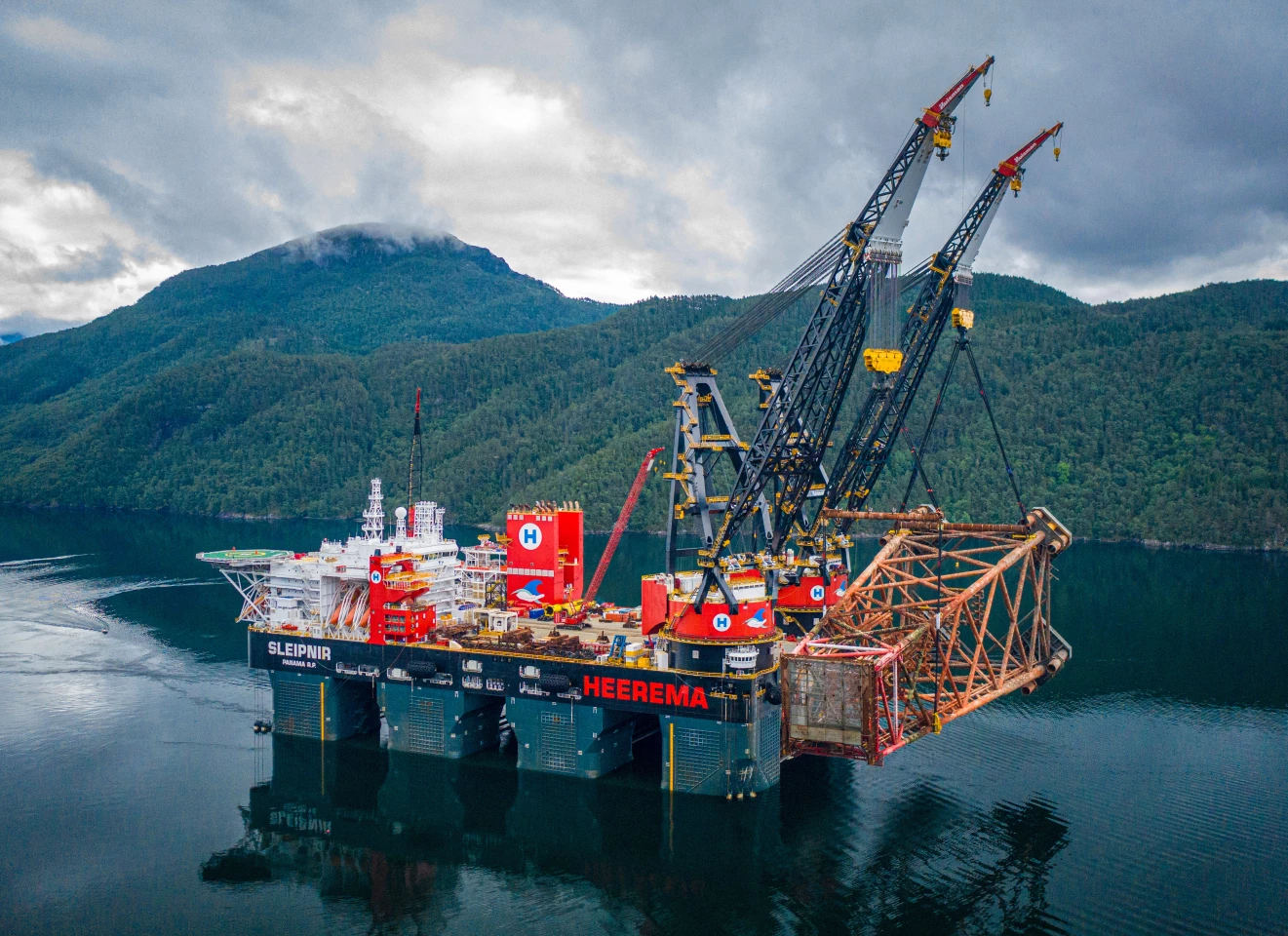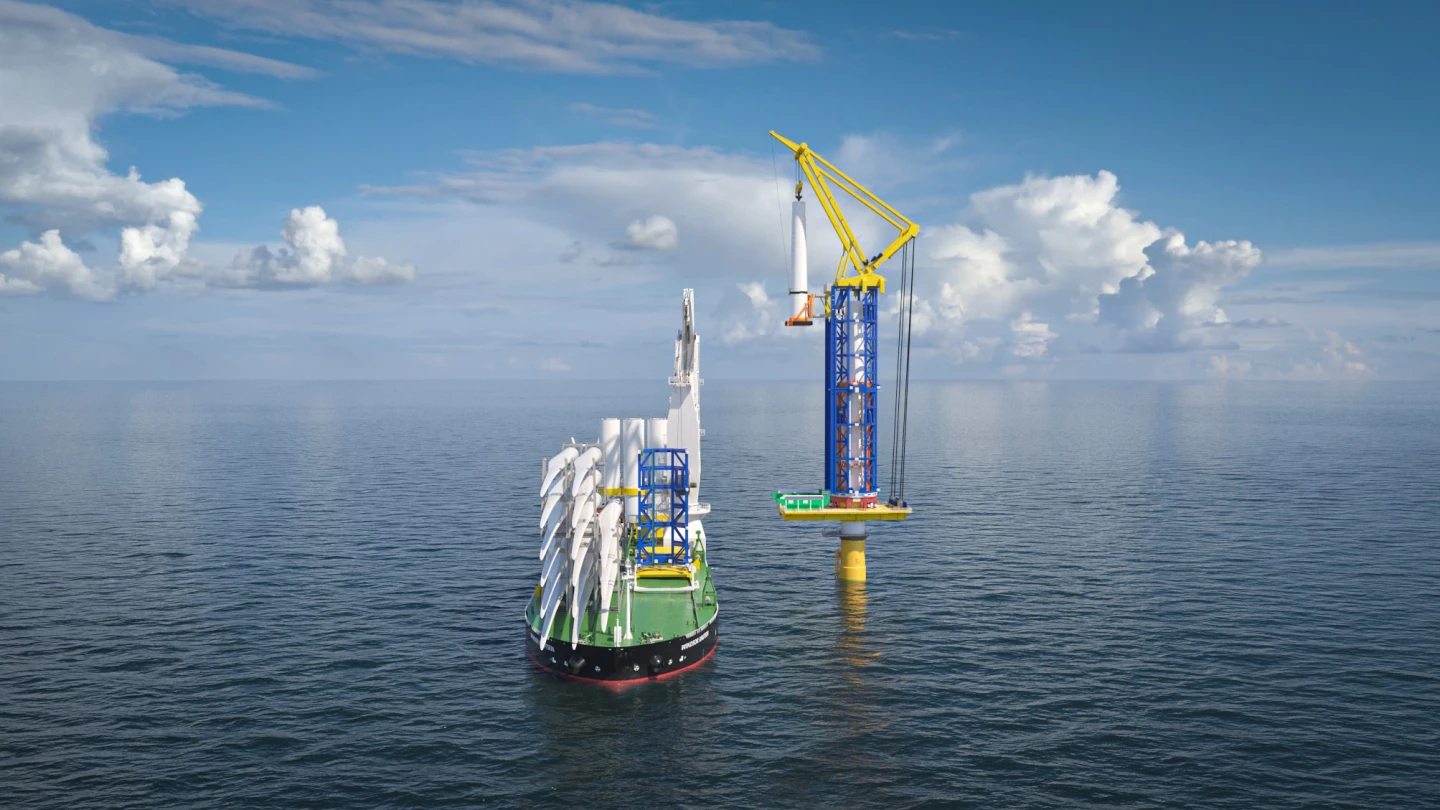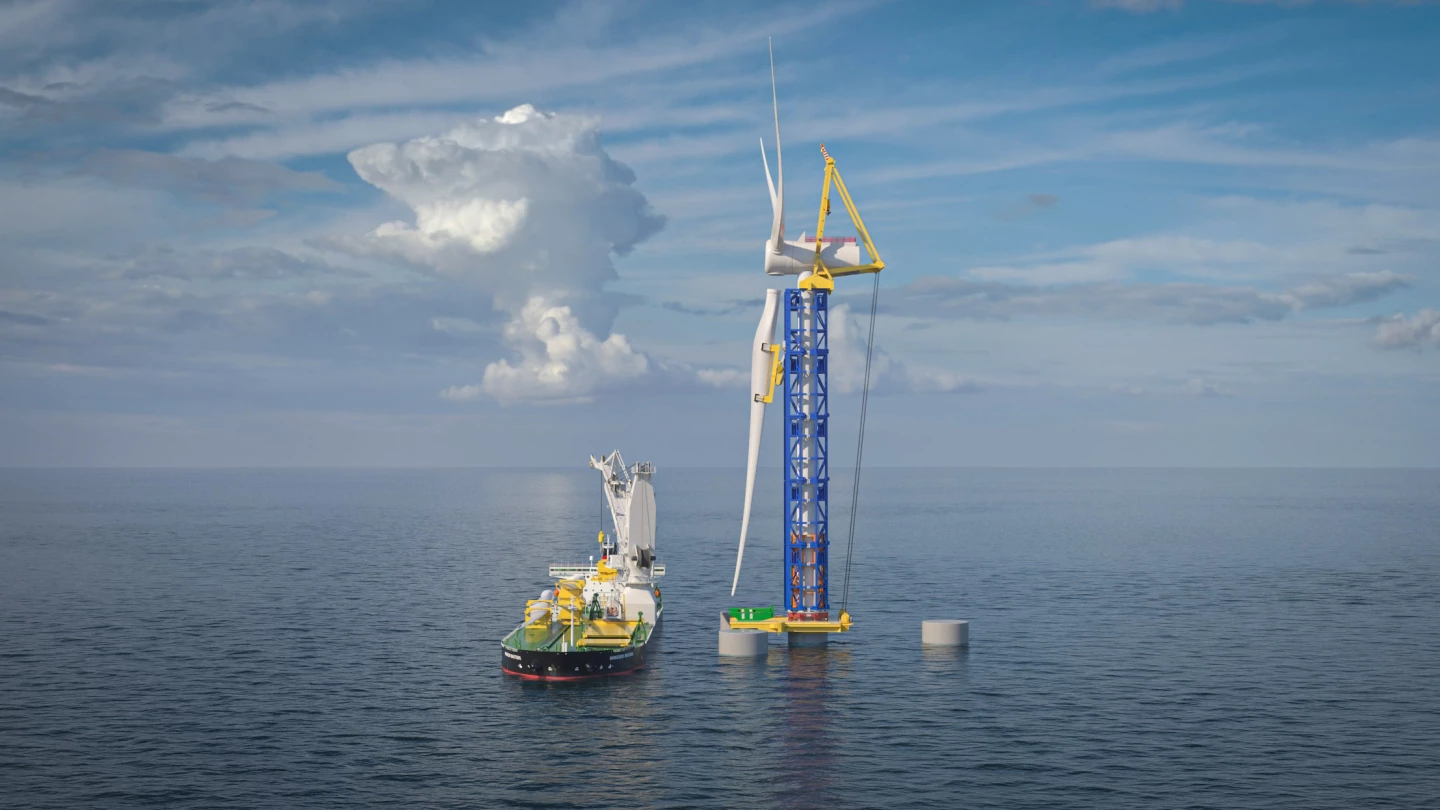The sheer size of today's wind turbines is mind-boggling – they're among the biggest machines humanity has ever built, and the bigger they get, the more potential value you can get by adding a little extra length to the blades.
But all that size comes at a considerable cost – not just in materials, but in logistics and installation. And particularly the cranes involved; remember, the heaviest bit of a regular pinwheel-style wind turbine is the generator right at the top of the tower.
With these towers now reaching several hundred feet high, imagine the crane ship you'd need to lift a 20-plus megawatt generator up there and hold it still. Actually, don't imagine, take a look:

The costs can be astronomical, and some of these operations can only be done in the flattest conditions, leaving equipment that costs hundreds of thousands of dollars a day sitting around and waiting.
A number of fascinating 'climbing crane' designs are starting to pop up to solve this problem, both onshore and off – and they look amazing, but mounting the crane directly to the turbine tower means you need to beef up the tower, so it can handle those asymmetrical loads.
The WindSpider design doesn't, since it builds its own little scaffold around the tower, section by section, and mounts the small crane unit directly to that. This means the system works with any old wind turbine design – and it can scale to handle more or less any size of turbine tower. You still need a crane ship, but it's a comparatively tiny one.

Another interesting feature here is the "blade tool." Wind turbine blades, of course, are lightweight and custom-designed to catch the wind. Installation sites are chosen because they're among the windiest spots in the world. So lifting these things on a regular crane rope could be a very hairy experience.
The WindSpider's blade tool clings to the side of the scaffolding, and holds a blade steady as it climbs up to the top, where it can then hold the blade in position as it's attached to the nacelle – even in heavy winds.
The company promises huge savings not only on installation, but on repairs and maintenance throughout the life of a turbine.

The Norwegian company has just received a grant from Innovation Norway, to continue developing the aluminum lifting solution, control system and simulator. "The project marks the start of building the first full-scale unit of the WindSpider system," reads a press release, " which has the potential to become one of the tallest cranes in the world."
We look forward to seeing these things in operation – lord knows, offshore wind could do with some help reducing costs as the world pivots toward clean energy.
Source: WindSpider via Recharge Energy








